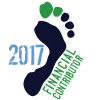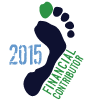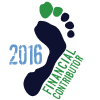Please help me to be clear on this. If I was running as fast as I want to and running with no blisters or other ill effects I wouldn’t care but since I’m not and can’t seem to get there, I do. There is one part of the gate cycle that I understand least, as far as what I am supposed to do, and if you helped me on it I think it would make a big difference for me. I continue to mess with my form almost every time I run and my pace seems to be greatly affected by whatever I do and varies from 8:30 per mile to 7:30 per mile at what appears to be the same level of effort. I also get these huge blisters about half the size of a deck of cards near the outside edge of my feet a little ways in back of the ball. I’ve been running barefoot for just over a year now.
What is meant by imagining you are running on egg shells? After you touch down, when do you try and lift your feet up?
1) As soon as you feel your feet touch the ground you immediately try to unload your body weight and pull them towards your center. It seems like when I do this I get very little forward propulsion.
2) You let the gate cycle finish and pull up a short time after you touch down, after that bounce like feeling, trying to maintain a rapid cadence. This is what it looks like Dr. Mark does. His leg is almost straight when his foot comes off of the ground.
3) You do what feels natural. When I do this it seems like my foot stays down for a longer time and my cadence seems to drop.
Thanks,
Jim
What is meant by imagining you are running on egg shells? After you touch down, when do you try and lift your feet up?
1) As soon as you feel your feet touch the ground you immediately try to unload your body weight and pull them towards your center. It seems like when I do this I get very little forward propulsion.
2) You let the gate cycle finish and pull up a short time after you touch down, after that bounce like feeling, trying to maintain a rapid cadence. This is what it looks like Dr. Mark does. His leg is almost straight when his foot comes off of the ground.
3) You do what feels natural. When I do this it seems like my foot stays down for a longer time and my cadence seems to drop.
Thanks,
Jim

































